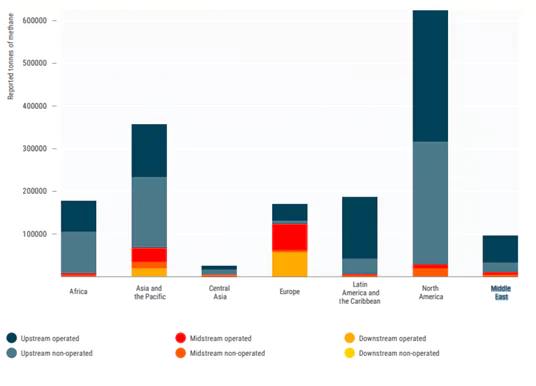Context: The UNEP report “An Eye on Methane: The Road to Radical Transparency” released at COP28 stated that Methane Alert and Response System (MARS) in its pilot stage identified 1,500 plumes and notified governments of 127 plumes on four continents.
What is Methane Alert and Response System?
- Methane Alert and Response System (MARS) is a satellite-based system launched at the 27th Conference of Parties (COP27) in Egypt.
- It uses data from multiple sources to detect and track methane emissions.
- Launched by: the United Nations Environment Programme (UNEP), the European Commission, the USA
- Aids in Policy Formation: It is a transparent and accountable system that provides governments and companies with the information they need to take action to reduce methane emissions.
About UNEP’s International Methane Emissions Observatory (IMEO):
- The IMEO was launched at the G20 Leaders Summit in 2021.
- Reconciling Data from Scientific Studies: It reconciles methane data from scientific measurement studies, satellites through the Methane Alert and Response System (MARS), rigorous industry reporting through the Oil and Gas Methane Partnership 2.0 (OGMP 2.0), and national inventories.Global Scientific Endeavors: The IMEO has also initiated 34 scientific studies across the globe. This research will cover where methane emissions come from, and how to mitigate them.
- The research will also focus on flaring efficiency, which is under-reported.
- IMEO also works with countries to develop baselining studies to serve multi-sectoral industry stakeholders and governments.
What is flare efficiency?
- The flare efficiency measures the combustion process’s effectiveness in oxidizing the fuel fully.
- When inefficiencies occur, unburned fuel, carbon monoxide, and other products of incomplete combustion (e.g., soot, volatile organic compounds, etc.) are emitted into the atmosphere.
|
The Oil & Gas Methane Partnership 2.0 (OGMP 2.0):
- OGMP 2.0 is the flagship oil and gas reporting and mitigation program of the United Nations Environment Programme (UNEP).
- Aim: To improve the accuracy and transparency of methane emissions reporting.
- OGMP was first launched in 2014 under the Climate and Clean Air Coalition, and was widened in scope and ambition in November 2020 to become OGMP 2.0.
- Goal: OGMP 2.0 supports oil and gas companies to better understand their emission profiles and, most importantly, to use this knowledge to mitigate these emissions.
Challenge:
- The emissions of non-OGMP 2.0 members could be on average much higher than those of current members, although the difference would have to be huge to account for the discrepancy.
- It is a dynamic process, as standards and practices will continue to evolve as new measurement and mitigation methods emerge.
What is Methane?
- Atmospheric methane (CH4) occurs in nature as the primary component of natural gas.
- It is the second largest contributor to climate change, accounting for around 16% of the warming effect.
- Global Warming Potential: Its warming effect is 28 times greater than CO2 over a 100-year timescale (80 times over 20 years).
- Methane Emission Scenario: Total reported methane emissions (tonnes) by segment, region, and operatorship of assets, 2022 )see Image).

- Around 580 million tonnes (Mt) of methane is emitted annually globally, 60 percent of which comes from human activities, according to the latest assessment cited in the report.
- In 2022, fossil fuel operations alone were responsible for around 120 Mt of methane emissions.
- Under current trajectories, total anthropogenic methane emissions could rise by up to 13 percent between 2020 and 2030.
Also Read: Cop28 Turns Attention To Potent Methane Emissions
Source: DTE
To get PDF version, Please click on "Print PDF" button.

